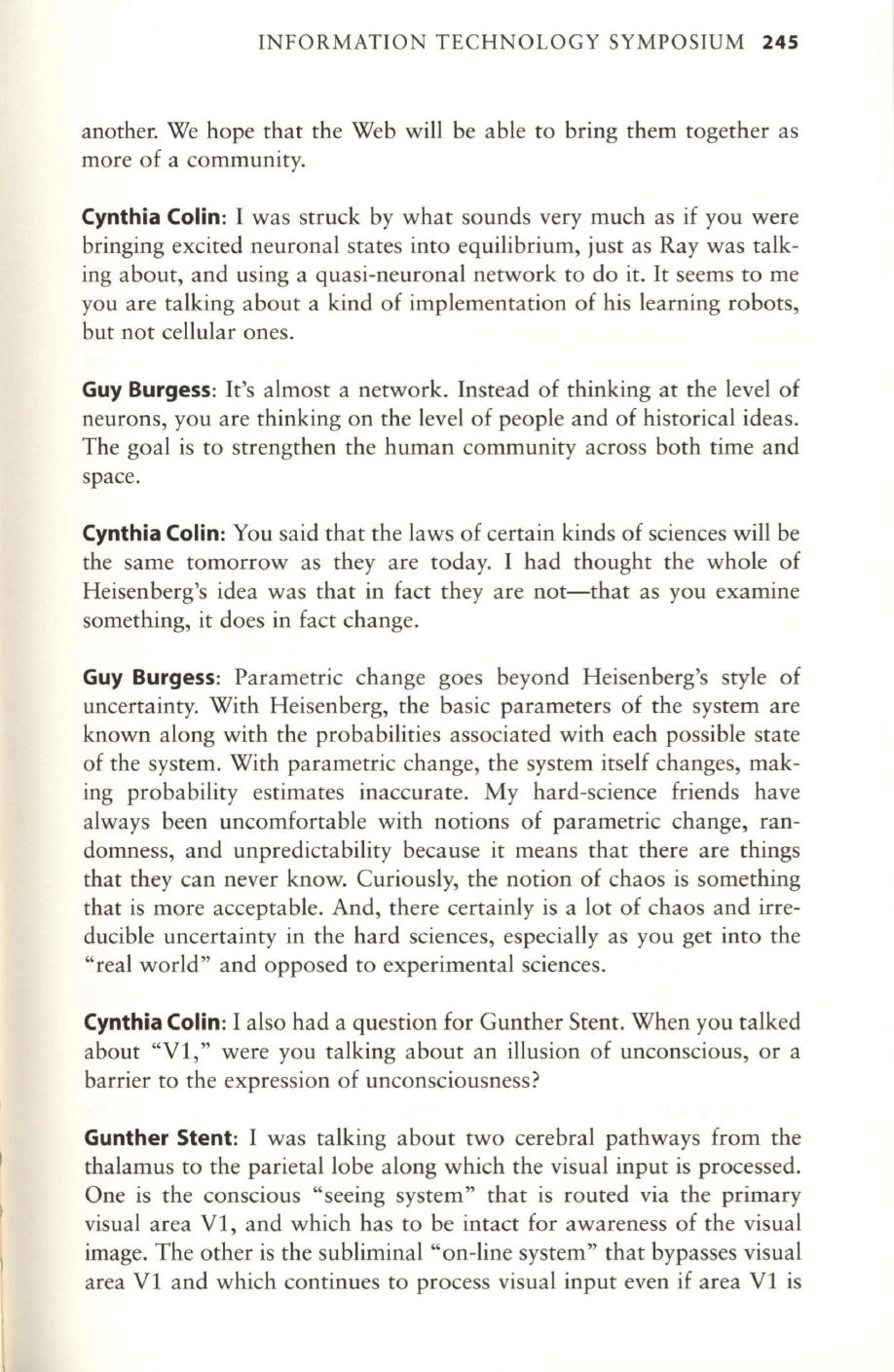
INFORMATION TECHNOLOGY SYMPOSIUM
245
another. We hope that the Web will be able to bring them together as
more of a community.
Cynthia Colin:
I was struck by what sounds very much as if you were
bringing excited neuronal states into equilibrium, just as Ray was talk–
ing about, and using a quasi-neuronal network to do it. It seems to me
you are talking about a kind of implementation of his learning robots,
but not cellular ones.
Guy Burgess:
It's almost a network. Instead of thinking at the level of
neurons, you are thinking on the level of people and of historical ideas.
The goal is to strengthen the human community across both time and
space.
Cynthia Colin:
You said that the laws of certain kinds of sciences will be
the same tomorrow as they are today. I had thought the whole of
Heisenberg's idea was that in fact they are not-that as you examine
something, it does in fact change.
Guy Burgess:
Parametric change goes beyond Heisenberg's style of
uncertainty. With Heisenberg, the basic parameters of the system are
known along with the probabilities associated with each possible state
of the system. With parametric change, the system itself changes, mak–
ing probability estimates inaccurate. My hard-science friends have
always been uncomfortable with notions of parametric change, ran–
domness, and unpredictability because it means that there are things
that they can never know. Curiously, the notion of chaos is something
that is more acceptable. And, there certainly is a lot of chaos and irre–
ducible uncertainty in the hard sciences, especially as you get into the
"real world" and opposed to experimental sciences.
Cynthia Colin:
I also had a question for Gunther Stent. When you talked
about "VI," were you talking about an illusion of unconscious, or a
barrier to the expression of unconsciousness?
Gunther Stent:
I was talking about two cerebral pathways from the
thalamus to the parietal lobe along which the visual input is processed.
One is the conscious "seeing system" that is routed via the primary
visual area VI, and which has to be intact for awareness of the visual
image. The other is the subliminal "on-line system" that bypasses visual
area VI and which continues to process visual input even if area VI is


